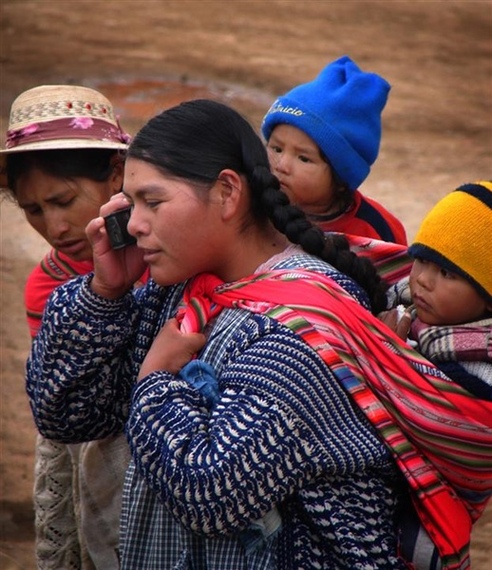By Cesar Buenadicha

César Buenadicha has led programs in social innovation, crowdfunding, social entrepreneurship, micro-franchising, educational loans, and local economic development for the Multilateral Investment Fund. He has a PhD in economics and advanced degrees in law and in economics.
How many clicks separate economic development practitioners in Washington, D.C., from the beneficiaries of their projects in other parts of the world? Probably a few clicks (according to the theory of six degrees of separation).
In the last few years, the rate of digital connectivity have continuously risen, and although more than half the world's population still lacks Internet access, global connectivity increased from 6.8% to 38.1% between 2000 and 2013, while cellular subscriptions increased from 12.1% to 92.6% (World Bank). This growing digital crowd is changing the object of development: the beneficiary is no longer someone far away and unreachable, but a person who should and can be part of the project intended to help his or her community.
How is this increasing global connectivity affecting the work of development organizations?
For decades, various academics, practitioners, and other development experts have been seeking a totally different way of doing development that would disrupt the current top-down approach by enabling vulnerable people to engage in the process. The top-down approach builds a detailed portrait of the target beneficiary and designs, implements, and monitors and evaluates a development project using tools such as demographic data, maps, field visits, feasibility studies, and impact evaluations. However, this process is clearly led by experts-gurus working in their headquarters and mediated by executing agencies in the field, while the project recipients continue to be mere observers.
These beneficiaries now can access more information about the agendas of development organizations and understand that they are able to have a bigger say in the interventions that affect their lives. Developmental organizations are aware of this shift and realize that many interventions are not as impactful, efficient, and innovative as they should be, therefore have started to look inwards and explore innovative ways to get closer to the field.
One of the first examples of the use of digital technology tools for development is Ushahidi. The Kenya-based organization uses crowdsourcing for social activism and public accountability projects, serving as an initial model for what has been coined "activist mapping"--a combination of social activism, citizen journalism, and geospatial information. For example, the platform has been using crowdsourcing to map cases of abuse of domestic help in the Middle East. The latest impact numbers on its website are 6.5 million testimonies and more than 20 million people reached.
Another tool is AskPeople, developed by the Multilateral Investment Fund (MIF), a member of the Inter-American Development Bank Group. AskPeople is designed to provide a direct communication channel between development practitioners and people in the targeted communities, ensuring that beneficiaries are involved in all stages of the process--from the identification of the problem, through its evaluation by surveys conducted via cellphones--with the goal of making the process more comprehensive, more transparent, and more democratic. The MIF conducted two pilot projects that tested an alternative project evaluation process in the cities of La Paz and El Alto in Bolivia, using 630 community "rapporteurs." The projects aimed to improve the competitiveness of small stores in La Paz, and to supply low-income households in El Alto with natural gas for heating and cooking. The beneficiary rapporteurs then gave their opinions on factors including the professionalism of the nongovernmental organizations that provided the services. The MIF's local partners, FUNDES and Diaconia, contrasted the results of both surveys with the results of a traditional project evaluation. This broadened their understanding of the needs and the wants of the beneficiaries.
Another example of using a digital technology tool for development is a new Mexico City government office, Lab for the City, using crowdsourcing methods to map bus routes in the city that were previously not known to bus riders (there is no official route map), therefore establishing a bottom-up approach to solving the city's transportation problems.
Moving from 'for the poor,' to 'by the poor'
Ultimately, the digital crowd that we are defining is evolving into an autonomous agent. They can change the idea of development projects as designed "for the poor," and go beyond the practice of "designed with the poor," to shape a new approach: "by the poor and previously excluded populations." In so doing, the poor will become their own stars of development programming, proposing their own ideas to address their local economic, social, and political development challenges. The real question, then, is whether and how development institutions are willing to accept this new paradigm and digitally empower the poor, so they become real-time active stakeholders of developmental interventions.
Shortening the distances in development; eliminating through digitally crowd-led interventions the hatred categories of "donor" vs. "recipient-beneficiary"; generating a productive, democratic, result-oriented, honest, and continuous dialogue between equally empowered parties--that should be the norm and not the exception in the near future of the development industry.
From the Multilateral Investment Fund Trends blog
